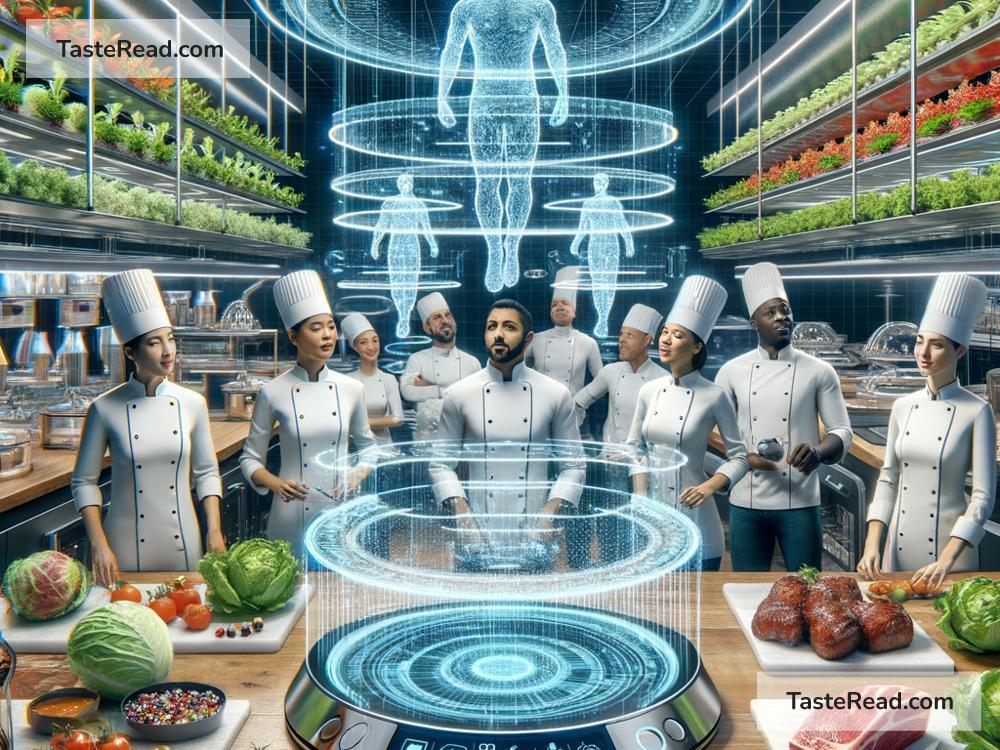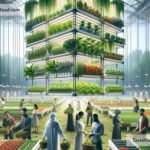The Future of Food: How Global Innovation is Changing What We Eat
Food brings us together. It’s at the heart of every culture, gathering, and celebration. But as the world changes, so does our relationship with food. From climate change and population growth to advancements in technology, the future of food is a hot topic. What will we eat? How will we grow food? And who gets a say in shaping that future?
The answer lies in innovation—and not just from scientists in labs or farmers in the field. It’s about people everywhere working together to solve global challenges. Participatory innovation, where ideas and solutions come from collaboration between individuals, communities, and organizations around the world, is key to shaping the future of food.
Let’s take a closer look at what’s influencing our food systems and how global innovation can point us toward a better, more sustainable future.
The Challenges Ahead
The way we produce and consume food is under pressure. Here are some of the big challenges shaping the future of food:
-
Climate Change
The Earth’s climate is shifting. Some places are experiencing droughts, while others face floods. Extreme weather events make it harder for farmers to grow food. Crops that once thrived in certain regions can no longer survive there. These changes mean we need to rethink how—and where—we grow food. -
Population Growth
By 2050, the world’s population is expected to reach nearly 10 billion. That’s a lot of mouths to feed! Current food systems might not be able to support this demand. We’ll need new ways to produce food, use resources wisely, and ensure that everyone has access to nutritious meals. -
Nutrition and Health
In some parts of the world, people face hunger and malnutrition. In others, they deal with health problems from eating too much processed food. The challenge isn’t just growing more food—it’s about creating diets that keep people healthy everywhere. -
Environmental Impact
Our current food systems can harm the planet. Large-scale agriculture contributes to deforestation, soil degradation, and pollution. The production of meat, in particular, uses a lot of land, water, and energy. We need to find ways to feed people without hurting the environment.
The Role of Innovation
Innovation is how we solve problems, big or small. Around the world, people are already exploring creative ideas to tackle the challenges facing food systems. Here are a few exciting areas of innovation:
-
Alternative Proteins
The way we eat protein is changing. Companies are creating plant-based meats, lab-grown meats, and insect-based proteins. These options use fewer resources and produce less pollution than traditional meat. -
Vertical Farming
Imagine growing lettuce in a skyscraper instead of farmland. Vertical farming uses stacked layers and controlled environments to grow crops year-round. This method takes up less space and can be done in cities, bringing food closer to where people live. -
Food Waste Reduction
About one-third of all food produced globally is wasted. Innovations like smart packaging, AI to predict consumer demand, and apps to connect surplus food with people in need are helping to cut down on waste. -
Tech-Enabled Agriculture
Drones, sensors, and data analytics are changing farming. Farmers can monitor crops more accurately, use water efficiently, and predict yields better. Technology makes agriculture smarter and more sustainable. -
Regenerative Practices
Some farmers are returning to nature for inspiration. Regenerative agriculture focuses on restoring soil health, improving biodiversity, and using practices that work with, rather than against, the environment.
Everyone Can Innovate: Participatory Solutions
Innovation doesn’t have to come from a fancy lab or a big company. In fact, the best solutions often come from ordinary people. This idea is called participatory innovation, and it’s growing in popularity.
Communities around the world are already coming together to tackle food challenges in unique ways:
-
Urban Gardening: Cities like Detroit and Singapore have turned to community gardens and rooftop farms to grow fresh, healthy food. These local efforts reduce transportation costs and encourage people to connect with nature.
-
Crowdsourced Ideas: Platforms like OpenIDEO (an innovation network) ask everyday people to share their creative solutions for global issues. Participants have contributed ideas to improve food security, reduce waste, and enhance nutrition.
-
Education and Workshops: Schools, nonprofits, and local organizations teach people how to grow their own food, cook healthy meals, and reduce waste. When people are empowered with knowledge, they can innovate from the ground up.
-
Collaboration Across Borders: Technology makes it easier to connect across countries and cultures. Farmers in Africa, Asia, and South America can share insights, techniques, and best practices with others worldwide.
Shaping the Future: Start Small, Dream Big
The future of food is exciting, and everyone has a role to play. Whether you’re planting your first vegetable garden, learning to compost, or supporting sustainable food brands, small actions add up. Participatory innovation reminds us that global problems require global voices. When we work together, we create a future where food is abundant, healthy, and environmentally friendly.
As we face challenges ahead, one thing is clear: food isn’t just something we consume—it’s something we can all help create. The future of food is in our hands, and the next chapter starts now. Together, let’s reimagine what’s on our plates and make the world a better place—one bite at a time.

